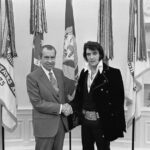As motorsports enthusiasts gear up for another exhilarating season in 2025, the rivalry between Formula 1 (F1) and IndyCar continues to captivate fans around the globe.While both racing series share the common objective of high-speed competition, they diverge considerably in thier regulations, racing formats, and overall philosophies. In this article, we delve into the key differences between F1 and IndyCar, examining how these distinctions shape the experiences for drivers, teams, and fans alike. From the technical innovations that define each series to the unique challenges posed by their respective circuits, understanding these differences is essential for any motorsport aficionado eager to appreciate the nuances of each form of racing. Join us as we explore what sets these two premier motorsport categories apart in 2025.
Understanding the Technical Innovations Shaping F1 and IndyCar in 2025
As the motorsport world gears up for 2025, the technical evolution of both Formula 1 and IndyCar is set to redefine what speed and efficiency truly mean on the racetrack. In F1, the introduction of ground effect aerodynamics has changed the way teams approach car design, allowing for improved downforce and cornering speeds. Coupled with enhanced hybrid power units, which now feature more powerful energy recovery systems, F1 cars are not only faster but also more sustainable. Key innovations include:
- Advanced battery technology – Extending the range and efficiency of hybrid systems.
- Active aerodynamics – Dynamically adjusting wings for optimal performance.
- Smart telemetry systems – Providing real-time data to optimize strategy and performance.
Conversely, IndyCar continues to build on its tradition of close racing with technical regulations that emphasize cost-effectiveness and competitive parity. The iconic oval races have been tailored with the introduction of spec chassis and engines, ensuring that performance disparities are minimized, while safety remains paramount. Innovations driving IndyCar as it heads into 2025 include:
- Single tire supplier – Promoting consistency in competition and reducing tire-related variables.
- Hybrid engines – Integrating hybrid technology to boost performance while reducing emissions.
- Telemetric upgrades – Enhanced communication systems allowing engineers to optimize race strategies efficiently.
The Impact of Strategy and Pit Stops on Race Outcomes in Both Series
The strategic elements of Formula 1 and IndyCar have evolved significantly, contributing to the contrasting race outcomes seen in each series.In F1, teams meticulously plan race strategies, utilizing advanced simulations and telemetry data to decide on pit stop timing and tire selection. This leads to dynamic race scenarios, where a single strategic miscalculation can drastically alter the standings. Pit stops in F1 are highly choreographed, involving intricate mechanics and precise execution, with average times typically around 2-3 seconds, showcasing the importance of teamwork in maximizing track position.
Conversely, IndyCar places a greater emphasis on driver input and adaptability during races. The series allows for a more fluid approach to pit strategies, where drivers can communicate changes on the fly and make decisions based on immediate race conditions. Key differences can be noted in the style and frequency of pit stops, with IndyCar pit durations averaging around 6-7 seconds, which opens the door for more aggressive tactics and overtakes during restarts. This adaptability frequently enough leads to unpredictability in race outcomes, where a driver’s skill in handling late-race scenarios can yield dramatic results.
| Aspect | Formula 1 | indycar |
|---|---|---|
| Strategy Development | Advanced simulations, vary by track | Driver-driven adaptability |
| Pit Stop Times | 2-3 seconds average | 6-7 seconds average |
| Race Dynamics | Highly scripted scenarios | Greater unpredictability |
Fan Engagement and Market trends: How F1 and IndyCar are Captivating Audiences
In 2025, both formula 1 and IndyCar have significantly evolved their strategies for fan engagement, utilizing technology and social media to create immersive experiences that captivate audiences around the globe. Formula 1 has taken innovative approaches by enhancing their digital presence through a revamped mobile app and interactive content. The app now features real-time data analysis,team communications,and exclusive behind-the-scenes footage that allow fans to feel closer to the action. Similarly, IndyCar is leaning into its rich heritage by promoting fan-centric events, such as the “Paddock Pass” initiative, which allows fans unprecedented access to the garages and pit crews.This personal interaction has fostered a deeper connection between fans and their favorite drivers, enhancing the overall race experience.
Market trends indicate that engagement is not just about immersive technology but also about community building. Fans are increasingly seeking connections that go beyond watching races. both motorsport series are investing heavily in local events and grassroots initiatives aimed at fostering relationships with younger audiences. Key elements include:
- Esports Integration: Both F1 and IndyCar have popularized virtual racing leagues, drawing in younger demographics who are avid gamers.
- Social Media Campaigns: Engaging content across platforms allows fans to interact with drivers and teams, creating a more personal fan experience.
- Merchandising Enhancements: Customizable race gear is now available, enabling fans to support their teams in unique ways.
The Way Forward
while both Formula 1 and IndyCar share a common foundation in open-wheel racing,the distinctions between the two series have become more pronounced as of 2025. From the technological innovations and global exposure of F1 to the cost-effective approach and fan-centric nature of IndyCar, each racing series offers a unique spectacle for motorsport enthusiasts. As both organizations continue to evolve,their differences not only shape the competition on the track but also influence their respective fanbases and commercial strategies. Understanding these key differences enhances the viewing experience for fans, whether they are drawn to the glamour of F1 or the thrilling accessibility of IndyCar. Moving forward, the ongoing rivalry and interplay between these two racing giants will undoubtedly continue to captivate audiences worldwide.










